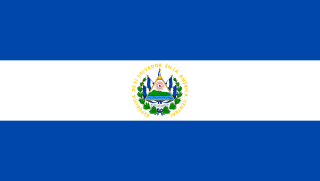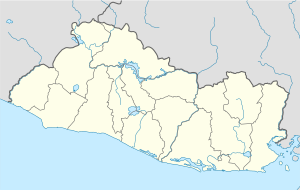
Morazán is a department of El Salvador. Located in the northeast part of the country, its capital is San Francisco Gotera. It covers a total surface area of 1,447 km2 and has a population of more than 199,500.

The culture of El Salvador is a Central American culture nation influenced by the clash of ancient Mesoamerica and medieval Iberian Peninsula. Salvadoran culture is influenced by Native American culture as well as Latin American culture. Mestizo culture and the Catholic Church dominates the country. Although the Romance language, Castilian Spanish, is the official and dominant language spoken in El Salvador, Salvadoran Spanish which is part of Central American Spanish has influences of Native American languages of El Salvador such as Lencan languages, Cacaopera language, Mayan languages and Pipil language, which are still spoken in some regions of El Salvador.

Matagalpa is a city in Nicaragua which is the capital of the department of Matagalpa. The city has a population of 112,697, while the population of the department is 606,643. Matagalpa is Nicaragua's seventh largest city, the largest in the country's interior, and one of the most commercially active outside of Managua. Matagalpa is known as the "Pearl of the North" and "Land of Eternal Spring."
Uluazapa is a municipality in the San Miguel department of El Salvador. The town is located approximately 30 minutes from San Miguel and is known for its musical atmosphere. Many refer to it as a "cradle of musicians" for its emphasis on musical education. The name "Uluazapa" stands for "Stony place of the Ulúas" in Nauathl, which were Indian tribes that inhabited the area pre-Columbian time. The municipality is made up of surrounding cantons, hamlets, and neighborhoods. The Uluazapa Central Park is located in the middle of the town, next to the colonial "San Pedro Apostal" church and the municipal hall. Surrounding the park are local shop, restaurants, and businesses. It also has a large sport center equipped with a soccer field and basketball courts. The town has a population of 3,351 Inhabitants.

Yoloaiquín is a municipality in the Morazán department of El Salvador.

Torola is a municipality in the Morazán department of El Salvador.

Sociedad is a municipality in the Morazán department of El Salvador. It lies between La Unión and San Miguel, both of which are departments of El Salvador.

Sensembra is a municipality in the Morazán department of El Salvador.

San Francisco Gotera is a municipality in the Morazán department of El Salvador. It is the capital of the Morazán department in El Salvador.

San Simón is a municipality in the Morazán department of El Salvador.

Gualococti is a municipality in the Morazán department of El Salvador.

Guatajiagua is a municipality in the Morazán department of El Salvador.
Joateca is a municipality in the Morazán department of El Salvador. It has a population of 4,210.

Lolotiquillo is a municipality in the Morazán department of El Salvador.

Meanguera is a municipality in the Morazán department of El Salvador.

Salvadorans, also known as Salvadorians, are citizens of El Salvador, a country in Central America. Most Salvadorans live in El Salvador, although there is also a significant Salvadoran diaspora, particularly in the United States, with smaller communities in other countries around the world.

Prodetur is an ecotourism organization, directed and managed by Luis Diaz Martinez, and is headquartered in the village of Perquin in the Morazán Province of El Salvador. Prodetur directs tourist activities in Morazán which ensure the continuity of the Rio Sapo preservation initiative.

The Cacaopera people also known as the Matagalpa or Ulúa., are an indigenous people in what is now El Salvador and Nicaragua.
Cacaopera is a municipality in the Morazán department of El Salvador.
Chilanga is a municipality in the Morazán department of El Salvador.










